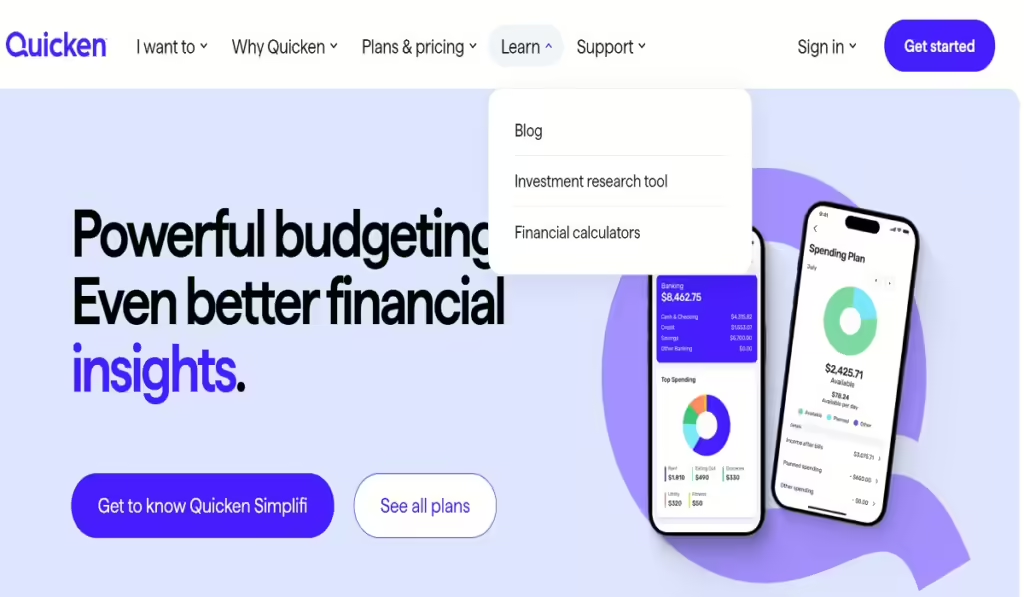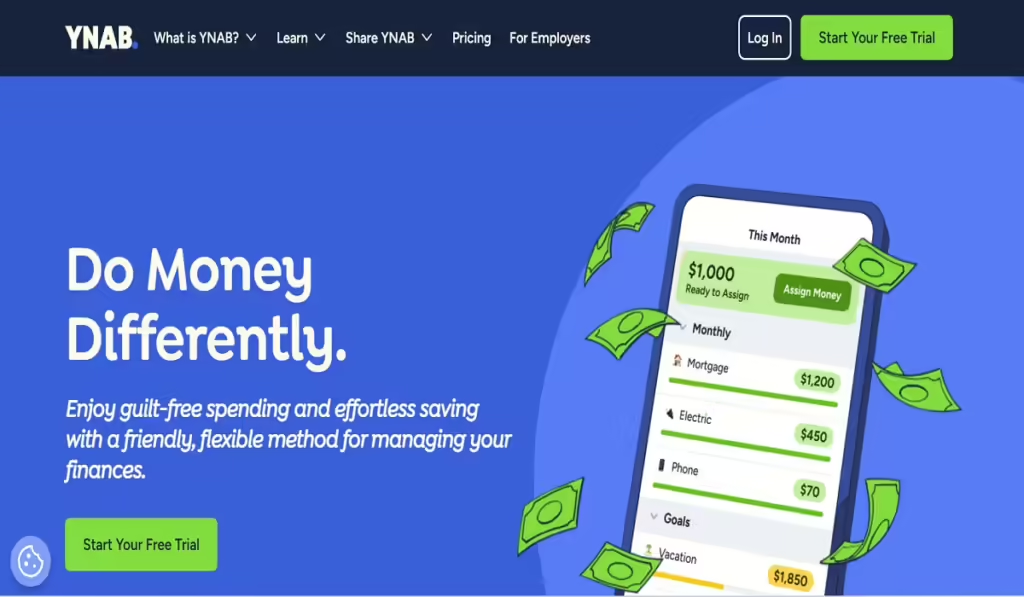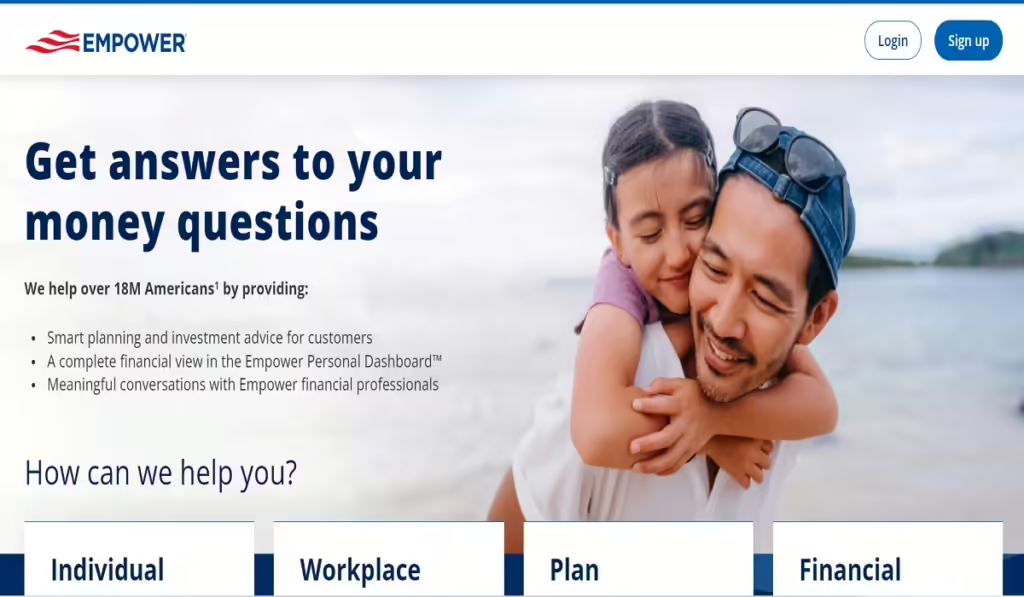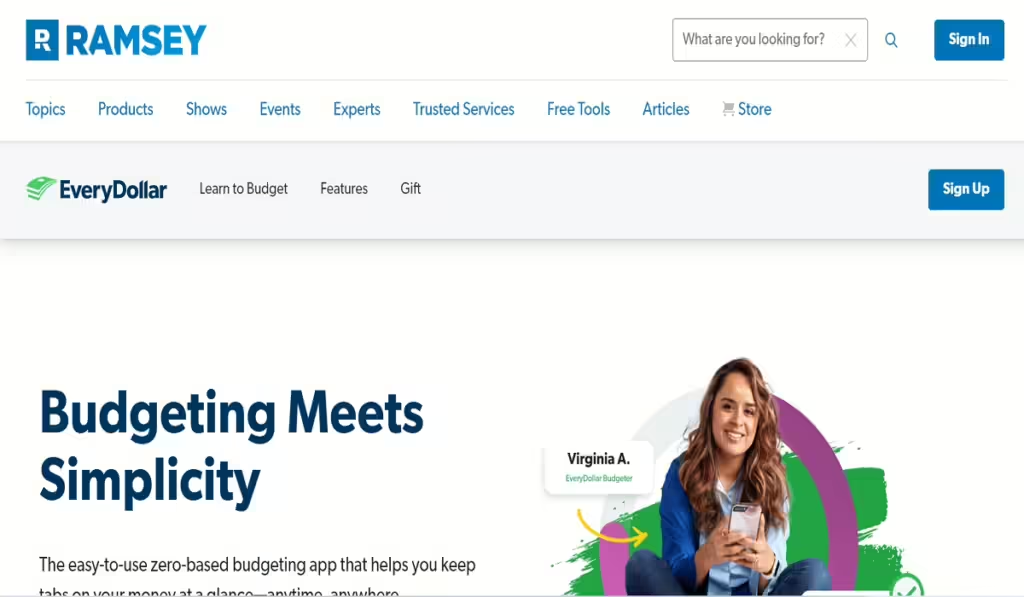Managing personal finances can be overwhelming, especially with multiple expenses, debts, and savings goals to juggle. Personal finance software helps simplify this process by providing tools to track spending, create budgets, plan for future expenses, and manage investments. With the right software, you can gain a clear picture of your financial health, make informed decisions, and achieve your financial goals more efficiently.
Top 5 Personal Finance Software
1. Quicken

Quicken has been a trusted name in personal finance for decades. It offers a comprehensive suite of tools designed to help users manage their money effectively.
Features: Quicken allows you to connect all your bank accounts, credit cards, loans, and investments in one place. It offers detailed budgeting tools, bill tracking, and payment reminders. One of its standout features is investment tracking, which provides insights into your portfolio performance and helps with tax planning.
Pros:
- Quicken provides detailed financial reports that give you a deep understanding of your spending and saving habits.
- It offers a wide range of features, making it suitable for various financial needs, from budgeting to investment tracking.
- The software has a long-standing reputation for reliability and comprehensive support.
Cons:
- Quicken can be pricey compared to other options, with plans starting at $35.99 per year.
- There is a learning curve for beginners, as the extensive features can be overwhelming initially.
Pricing: Quicken offers several plans starting at $35.99 per year, with more advanced features available in higher-tier plans.
2. Mint

Mint, a product of Intuit, is one of the most popular personal finance apps available, primarily because it is free and easy to use.
Features: Mint provides budgeting and expense tracking tools, allowing you to categorize transactions and see where your money is going. It also offers credit score monitoring and alerts for unusual account activity, upcoming bills, and low balances. Investment tracking is available, though it is more basic compared to some other tools.
Pros:
- Mint’s user-friendly interface makes it accessible for users of all tech levels.
- The comprehensive financial overview helps you understand your financial situation at a glance.
- Customizable alerts keep you informed about your financial activity and upcoming bills.
Cons:
- The app includes advertisements, which can be distracting.
- Investment tracking features are limited compared to dedicated investment management tools.
Pricing: Mint is free to use, supported by ads. There are no premium plans, which means all features are available to all users.
3. YNAB (You Need a Budget)

YNAB takes a unique approach to budgeting with its zero-based budgeting system, which requires you to assign every dollar a job.
Features: YNAB focuses on helping users develop a proactive approach to budgeting. It offers goal tracking, real-time syncing across multiple devices, and detailed financial education resources. The software encourages users to think ahead and plan for future expenses, promoting better financial habits.
Pros:
- YNAB is highly effective for debt reduction and saving, as it encourages users to live within their means.
- The software has a supportive community and plenty of educational content to help users get the most out of their budget.
- Real-time syncing ensures that all your devices are up to date with the latest financial information.
Cons:
- YNAB requires a monthly subscription fee, which may be a drawback for some users.
- The zero-based budgeting approach requires commitment and might not suit everyone’s budgeting style.
Pricing: YNAB costs $14.99 per month or $98.99 per year, with a 34-day free trial available.
4. Personal Capital (Empower)

Personal Capital is more than just a budgeting tool; it’s a wealth management and investment tracking powerhouse.
Features: Personal Capital offers a range of features designed to help users manage their investments and plan for retirement. It provides budgeting tools, but its real strength lies in its investment analysis and net worth tracking. Users can view their portfolio performance, assess their asset allocation, and receive personalized investment advice.
Pros:
- Personal Capital offers comprehensive investment analysis tools, making it ideal for those with significant investments.
- The software provides detailed net worth reports, helping users understand their overall financial health.
- Basic features are free, offering substantial value without a subscription fee.
Cons:
- Premium advisory services can be costly, which may not be suitable for all users.
- The focus on investments might be less appealing to those looking for purely budgeting tools.
Pricing: Basic features are free, but premium advisory services come at a cost based on the amount of assets managed.
5. EveryDollar

EveryDollar, created by financial expert Dave Ramsey, focuses on zero-based budgeting to help users manage their money effectively.
Features: EveryDollar allows users to create a custom monthly budget, track spending, and plan for future expenses. It syncs with bank accounts for easy transaction tracking and offers customizable budgeting categories to suit individual needs.
Pros:
- The interface is simple and intuitive, making it easy to set up and use.
- EveryDollar is an effective budgeting tool, especially for those new to budgeting or following Dave Ramsey’s financial principles.
- A free version is available, making it accessible to all users.
Cons:
- The free version has limited features, and some users may find the premium version costly.
- It lacks investment tracking, which might be a drawback for those looking for comprehensive financial management.
Pricing: EveryDollar offers a free basic version. The premium version, EveryDollar Plus, costs $129.99 per year.
Comparative Analysis
When comparing these top personal finance software options, several factors come into play, including usability, features, and cost.
Usability: Mint and EveryDollar are known for their user-friendly interfaces. Mint’s comprehensive financial overview is easy to navigate, while EveryDollar’s straightforward budgeting tools make it simple to use. YNAB, despite its more complex budgeting system, is also user-friendly once you get the hang of it.
Features: Quicken and Personal Capital offer the most extensive range of features. Quicken’s detailed financial reports and versatile tools make it a robust option for various financial needs. Personal Capital excels in investment tracking and wealth management, providing detailed insights into your portfolio. YNAB’s focus on zero-based budgeting helps users take control of their finances effectively, while Mint offers a balanced mix of budgeting, credit score monitoring, and basic investment tracking.
Cost: Mint stands out for being completely free, making it accessible for everyone. YNAB and EveryDollar offer premium features at a cost, which might be justified by their specialized tools and support. Quicken’s annual fee provides access to its comprehensive suite of tools, while Personal Capital’s basic features are free, with costs associated with premium advisory services.
Tips for Choosing the Right Software
Choosing the right personal finance software depends on your specific needs and financial goals. Here are some tips to help you make the right choice:
- Identify Your Financial Goals: Determine if you need a tool primarily for budgeting, investment tracking, or both. Your primary goal will guide your choice.
- Consider Your Budget: Evaluate how much you are willing to spend on personal finance software. Free options like Mint can be very effective, while paid versions of YNAB and Quicken offer advanced features for a fee.
- Evaluate Features: Look for software that provides the features most important to you. If you need detailed investment tracking, Personal Capital or Quicken might be the best choice. For budgeting, YNAB and EveryDollar are highly effective.
- Ease of Use: Choose software that you find intuitive and easy to navigate. The simpler it is to use, the more likely you are to stick with it and effectively manage your finances.
- Security: Ensure the software has robust security measures to protect your financial information. Look for tools that offer data encryption, secure login, and regular security updates.
Final Thought
Selecting the top personal finance software is a personal decision that depends on your unique financial needs and goals. Quicken offers a comprehensive suite of tools suitable for detailed financial management, while Mint provides a user-friendly experience for those on a budget. YNAB is excellent for individuals committed to a proactive budgeting approach, and Personal Capital is ideal for those focused on investment tracking and wealth management. EveryDollar stands out for straightforward budgeting needs.
By choosing the best financial management tools for your situation, you can take control of your finances, reduce stress, and work towards your financial goals with confidence. If you aim to budget better, track investments, or plan for the future, there’s a personal finance software solution out there for you.







